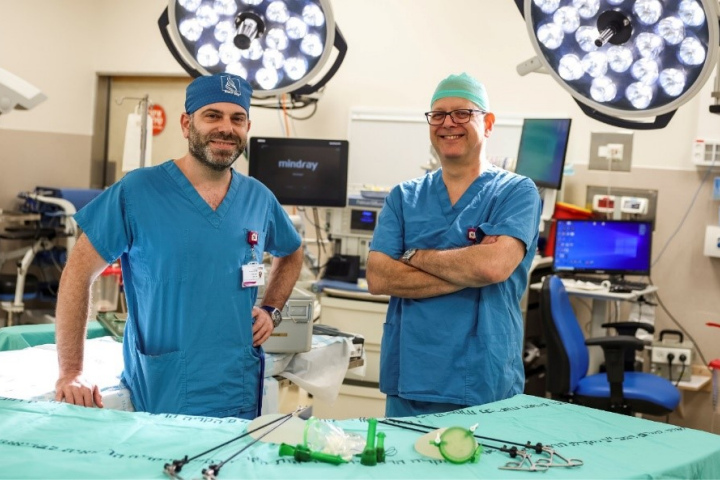For many women facing a mastectomy, the loss of the nipple can deepen an already traumatic experience. Now, surgeons at Rambam Health Care Campus (Rambam) have performed Israel’s first endoscopic nipple-sparing preventive mastectomy and immediate reconstruction—offering new hope with minimal scarring.
 (L-R) Professor Zeltzer and Dr. Hoffman. Photography: Rambam HCC.
(L-R) Professor Zeltzer and Dr. Hoffman. Photography: Rambam HCC.
Dr. Aviad Hoffman, director of Rambam’s Breast Surgery Unit, and Professor Assaf Zeltzer, director of the Department of Plastic and Reconstructive Surgery, have made national history by completing Israel’s first-ever minimally invasive, endoscope-guided preventive mastectomy with immediate implant reconstruction while preserving the nipple. The surgeons inserted a fiber-optic camera near the targeted tissue, enabling a more precise mastectomy with greater precision, less scarring, and minimal trauma to the surrounding areas. This minimally invasive technique lowers the risk of complications and shortens hospitalization time, giving patients a safer recovery and a more aesthetic result.
The new procedure offers an ideal solution for women carrying the breast BRCA gene mutation—a gene that sharply increases their lifetime risk of developing breast and ovarian cancer. In such cases, surgeons typically perform preventive mastectomies, as recently seen in actress Angelina Jolie. This new minimally-invasive technique enables maximal preservation of both the breast and the nipple.
Hoffman and Zeltzer attended the world’s first conference on minimally invasive breast surgery in Paris, joining leading surgeons from around the globe to explore advancements in this emerging field. They spent several months preparing to perform the procedure on a 29-year-old woman who carries a BRCA gene mutation.
Zeltzer emphasizes the exacting teamwork the new method requires. “This technique demands a high level of skill from the surgeons performing it and close collaboration,” he says. “The benefits for patients are substantial compared with the traditional methods we’ve used until now.”

